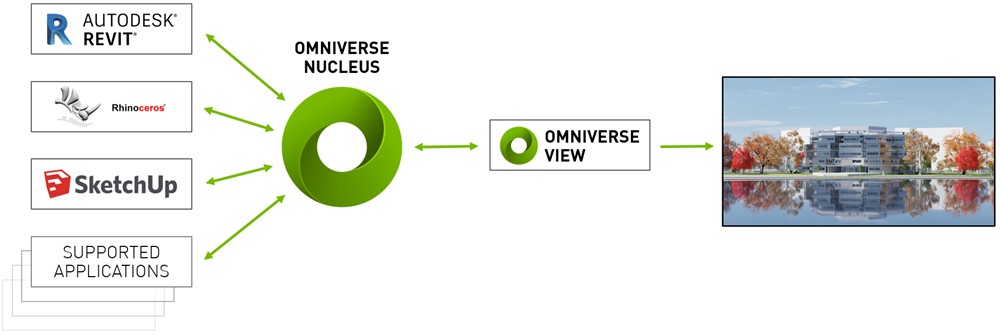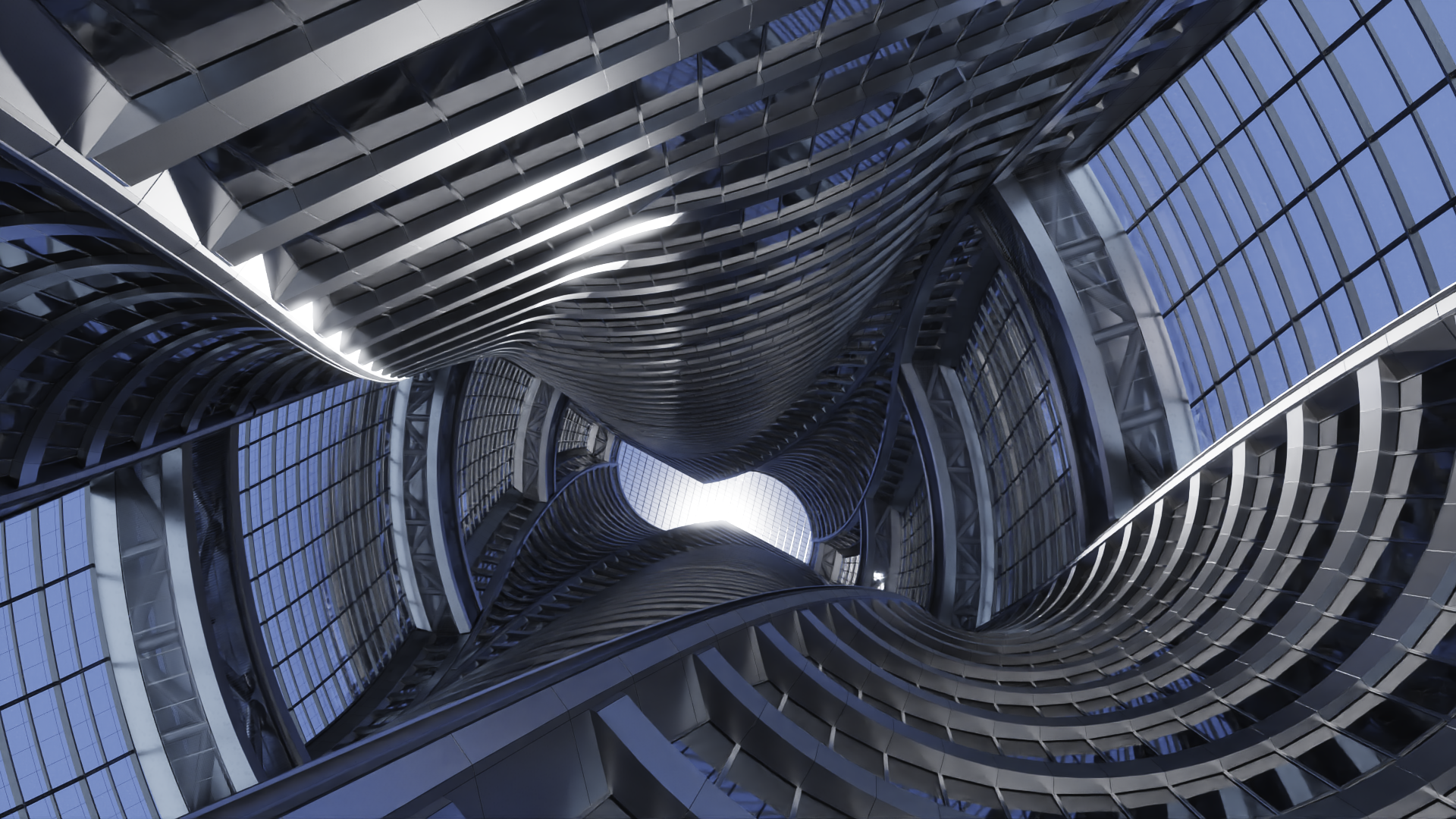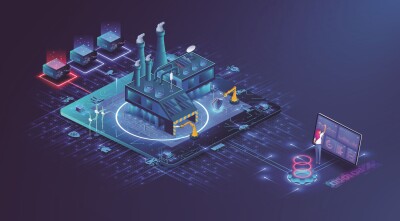Graphics company NVIDIA has announced an open beta version of Omniverse, a 3D simulation and design platform at the keynote kicking off their GPU Technology Conference earlier in the week. The beta release of the platform follows closed early access partnerships that included Ericcson, Foster + Partners, Lucasfilm and more than 40 additional companies.
The Omniverse platform is designed so that remote teams can collaborate simultaneously on projects as readily as they would co-edit a document online – but even if they are working or viewing in different software. The platform can be used for those in AEC who want to iterate together on 3D building design, for animators who want to revise 3D effects and movie scenes, or engineers working on designs together.
Omniverse is based on Pixar’s Universal Scene Description (USD) format, an open-source format for universal interchange between 3D graphics applications. USD brings a unified method and format for seamlessly sharing most aspects of a 3D scene while maintaining application-specific data unlike most export/import workflows. The structure allows for only changes to be relayed, enabling edits to objects, environments and other design elements within the collaborative scene to be efficiently communicated between applications while maintaining overall integrity.
The Omniverse platform uses NVIDIA technology such as real- time photorealistic rendering, physics, materials and interactive workflows between industry-leading 3D software products. Could this unifying platform be the glue that holds all of the different 3D graphics softwares together?
Getting serious about 3D in AEC
Aside from the obvious applications in the entertainment industry, through partners like Lucasfilm and Industrial Light and Magic, NVIDIA has been working with some clients in the architecture, construction and engineering space as well. Specifically called out in the announcement were tie-ins to popular AEC software (Revit, etc.), which could be a signal that Omniverse sees the 3D industry there worthwhile of their attention.
Early adopters Foster + Partners, an award-winning architectural firm in the UK, reports using Omniverse to help create a collaborative design process. Woods Bagot, a global architectural and consulting platform has been working on a cloud workflow for designing complex visualizations of buildings.
A unique feature of NVIDIA’s Omniverse is that it is now possible connect to numerous content creation applications and NVIDIA has created Apps and Experiences to showcase its capabilities in different workflows. Apps are built using Omniverse Kit and although quite useful on their own, they can serve as a starting point for developers to build-upon and extend or create their own. These Apps are available as examples to technical artists and developers and will continually be gaining new features and capabilities. Experiences are packages built to address specific use cases that contain all the necessary components and extensions along with a specialized App to tackle unique workflows.

A specific ‘AEC Experience‘ has been set up by NVIDIA to cover the common and shared platforms in building design. Overall, the Omniverse platform is designed to act as a kind of a hub, that enables existing software to connect to a larger ecosystem that can operate in real time and is based on open standards.
Teams located around the world can collaborate in real-time on the same scenes as they create new designs leveraging different applications with specialized artists. Omniverse application portals unite familiar industry tools into a collaborative space for both individuals and groups to work seamlessly across multiple applications. Teams can leverage incredible new technologies like real-time RTX rendering, light studies, physics, and simulation tools that provide new opportunities for creativity and production.
As the platform grows, new capabilities and connections can be added. However- there are already some very large names in 3D space that can tie in – including Revit, Unity, Esri, Trimble – with Bentley Systems listed as “coming soon.”
Autodesk’s Amy Bunzel, senior VP for Design and Creation Products is optimistic about how its millions of users worldwide will respond to Omniverse.
“The importance of our two-year collaboration with NVIDIA cannot be overstated. Projects and teams are becoming increasingly complex and we are confident Autodesk users across all industries will share our enthusiasm for Omniverse’s ability to create a more collaborative and immersive experience. This is what the future of work looks like.”
Next stop… the holodeck?
A unified platform that relies on an open standard for 3D objects and scenes is a big step for any industry, but putting it together in a modular package that can suit a variety of industries takes it to the next level. If widely adopted, it could make 3D applications that much more accessible for the massive teams working on large-scale projects. Eventually, the lines between team members, software, or physical location won’t matter for collaboration.
According to Jensen Huang, the founder and CEO of NVIDIA, Omniverse is where the “physical and virtual worlds will increasingly be fused” and compared it to the fictional “Holodeck” featured in star Trek.
“Omniverse gives teams of creators spread around the world or just working from home the ability to collaborate on a single design as easily as editing a document. This is the beginning of the Star Trek Holodeck, realized at last.”






